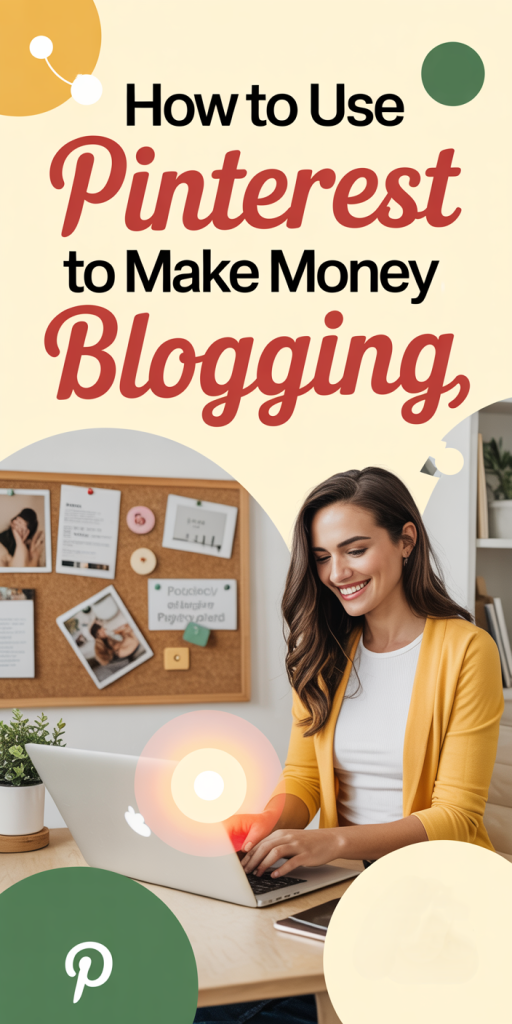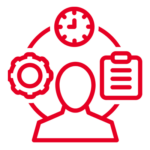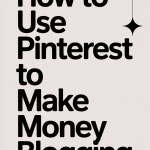Pinterest is a visual discovery engine that has become a goldmine for bloggers and content creators. With over 570 million monthly active users [1], the platform offers a unique opportunity to reach a massive audience with high purchasing intent. Unlike other social media platforms where users passively scroll through feeds, Pinterest users are actively searching for ideas, inspiration, and products. This makes it a powerful tool for driving traffic, building a loyal audience, and ultimately, making money from your blog.
This comprehensive guide will walk you through everything you need to know to harness the power of Pinterest for your blog. We’ll cover everything from setting up your account for success to advanced monetization strategies. You’ll learn how to create compelling content, master Pinterest SEO, and leverage the platform’s unique features to achieve your blogging goals. By the end of this guide, you’ll have a clear roadmap to turning your Pinterest presence into a significant income stream.
Understanding Pinterest as a Marketing Platform
To succeed on Pinterest, it’s crucial to understand what makes it different from other social media platforms. While it may have some social features, Pinterest is fundamentally a visual search engine. This distinction is key to developing an effective marketing strategy.
Pinterest vs Other Social Media Platforms
Unlike platforms like Instagram and Facebook, where content is ephemeral and users are primarily there to connect with friends, Pinterest is a platform for discovery and planning. Users come to Pinterest to find ideas for their future, whether it’s planning a wedding, redecorating a home, or finding new recipes to try. This means that content on Pinterest has a much longer lifespan than on other platforms. In fact, over 60% of saves on Pinterest are from Pins that are over a year old [2]. This evergreen nature of Pinterest content means that your efforts can continue to drive traffic and generate income for months, or even years, to come.
Another key difference is the user mindset. On other social media platforms, users are often in a passive consumption mode, scrolling through their feeds without a specific goal in mind. On Pinterest, users are in an active planning mode. They are actively searching for solutions to their problems and inspiration for their projects. This means they are much more receptive to branded content and affiliate links, as long as they are presented in a helpful and inspiring way.
Pinterest Demographics and Opportunities
Pinterest boasts a massive user base of over 570 million monthly active users [1], with a significant portion of them having high purchasing intent. According to Pinterest, 80% of weekly Pinners have discovered a new brand or product on the platform [1]. This presents a huge opportunity for bloggers to get their content and products in front of a receptive audience.
The demographics of Pinterest users are also favorable for many blog niches. The platform is particularly popular with women, who make up 70% of the user base [1]. The majority of users are between the ages of 18 and 49, and many have a high household income. This means that Pinterest users have the purchasing power to invest in the products and services you recommend.

Why Pinterest Works for Bloggers
Pinterest is a powerful marketing tool for bloggers for several reasons. First, it can drive a significant amount of high-quality traffic to your blog. Because users are actively searching for ideas and solutions, the traffic you get from Pinterest is often more engaged and more likely to convert than traffic from other sources.
Second, the visual nature of Pinterest makes it the perfect platform for promoting blog content. You can create beautiful, eye-catching Pins that showcase your blog posts, products, and services. This is especially effective for niches like food, fashion, home decor, and DIY, but it can be adapted for almost any niche.
Finally, Pinterest can also have a positive impact on your blog’s SEO. Pinterest is indexed by Google, which means that your Pins and boards can show up in Google search results. By optimizing your Pinterest profile and content for relevant keywords, you can increase your visibility in both Pinterest and Google search.
Setting Up Your Pinterest Business Foundation
Before you can start monetizing your blog with Pinterest, you need to set up a solid foundation. This means creating a Pinterest business account, optimizing your profile for visibility, and understanding the nuances of the Pinterest algorithm.
-
- Pinterest Business Account Setup
If you’re serious about using Pinterest for your blog, you need a business account. A business account gives you access to a wealth of features that are not available to personal users, including Pinterest Analytics, the ability to run ads, and access to Rich Pins. If you already have a personal Pinterest account, you can easily convert it to a business account. If not, you can create a new business account from scratch. The process is simple and free, and it’s the first step to unlocking the full potential of Pinterest for your blog.
-
- Pinterest Profile Optimization
Once you have your business account set up, it’s time to optimize your profile. Your profile is the first impression you make on potential followers, so you want to make sure it’s professional, informative, and keyword-rich. Start by writing a descriptive bio that clearly explains what your blog is about and who you serve. Be sure to include relevant keywords that your target audience is searching for. You should also use a high-quality, professional photo of yourself or your brand logo as your profile picture. Finally, create a set of well-organized boards with clear, keyword-rich titles and descriptions. This will help users understand what your content is about and make it easier for them to find what they’re looking for.
-
- Understanding the Pinterest Algorithm (2025 Updates)
The Pinterest algorithm is constantly evolving, so it’s important to stay up-to-date on the latest changes. In 2025, the algorithm is placing a greater emphasis on several key factors. First, board context is more important than ever. The board where you first save your Pin plays a significant role in how Pinterest understands and categorizes your content. Second, the definition of fresh content has become more nuanced. To get the maximum distribution, your Pins need to have a new image, a new URL, and be saved to a new board. Finally, alt text has become a major ranking factor. According to a study by Tailwind, Pins with alt text get 25% more impressions, 123% more outbound clicks, and 56% more profile visits on average [2].
References
[2] https://www.tailwindapp.com/blog/pinterest-seo-in-2025
-
- Pinterest SEO Mastery for 2025
Pinterest is a search engine, which means that SEO is crucial for getting your content discovered. By optimizing your pins, boards, and profile for relevant keywords, you can significantly increase your visibility and drive more traffic to your blog.
-
- Keyword Research and Strategy
Keyword research is the foundation of any successful Pinterest SEO strategy. You need to identify the keywords and phrases that your target audience is using to search for content related to your niche. There are several ways to do this. First, you can use the Pinterest search bar to see what suggestions pop up as you type. This will give you an idea of what people are searching for in real-time. You can also use the Pinterest Trends tool to see what topics are popular and trending on the platform. Once you have a list of relevant keywords, you can start incorporating them into your pin titles, descriptions, board titles, and alt text.
-
- Pin Optimization Best Practices
When it comes to pin optimization, there are a few best practices to keep in mind. First, use your target keywords strategically in your pin titles and descriptions. The most viral pins on Pinterest have descriptions that are between 220 and 232 characters long, so be concise and to the point. Second, don’t forget to add alt text to your pins. Alt text is not only important for accessibility, but it’s also a major ranking factor in the Pinterest algorithm. Finally, pay attention to the visual design of your pins. Pinterest’s visual search technology has become increasingly sophisticated, so it’s important to use high-quality images and graphics that are relevant to your content.
-
- Board Strategy for Maximum Impact
In 2025, your board strategy is more important than ever. The board where you first save your pin plays a significant role in how Pinterest understands and categorizes your content. To maximize your impact, create boards with clear, keyword-rich titles and descriptions. When you publish a new pin, save it to your most relevant board first. This will help Pinterest understand what your content is about and show it to the right audience. Avoid saving your pins to multiple unrelated boards, as this can dilute the signal and hurt your distribution.
-
- Content Creation Strategy for Pinterest Success
Creating high-quality, engaging content is at the heart of any successful Pinterest marketing strategy. In this section, we’ll explore the best practices for pin design, the importance of fresh content, and a seasonal strategy to help you stay consistent and effective throughout the year.
-
- Pin Design Best Practices
Your pin design is the first thing that users will see, so it’s important to make a good impression. Here are a few best practices to keep in mind:
Use a vertical format: Pinterest is a vertical platform, so your pins should be designed in a 2:3 aspect ratio. This will ensure that they take up the most screen real estate and are easy to read on mobile devices.
Use text overlays: Text overlays are a great way to grab attention and communicate what your pin is about. Use a clear, easy-to-read font and make sure your text is large enough to be legible on a small screen.
Maintain brand consistency: Use your brand colors, fonts, and logo to create a cohesive look and feel for your pins. This will help users recognize your content and build brand recognition over time.
Follow visual trends: Pay attention to the visual trends on Pinterest and incorporate them into your pin designs. This will help your content feel fresh and relevant.
-
- Fresh Content Strategy
As we mentioned earlier, Pinterest’s algorithm favors fresh content. But what exactly does “fresh” mean? In 2025, the definition of fresh content has become more nuanced. To get the maximum distribution, your pins need to have a new image, a new URL, and be saved to a new board. This doesn’t mean you have to create a new blog post for every pin you publish. You can create multiple fresh pins for the same blog post by using different images, titles, and descriptions.
Pinterest recommends publishing between 5 and 25 fresh pins per day. However, it’s important to prioritize quality over quantity. It’s better to publish a few high-quality pins than a bunch of low-quality ones.
-
- Pinterest Seasonal Strategy (2025 Framework)
To stay consistent and avoid burnout, it can be helpful to adopt a seasonal approach to your Pinterest strategy. Here’s a framework you can use:
Grow Phase (January-June/July): This is the time to be aggressive with your pinning strategy. Publish 3-5 fresh pins per day, experiment with new pin designs, and actively engage with other users on the platform.
Maintain Phase (August-November): During this phase, you can scale back your pinning frequency to 2-3 pins per day. Focus on pinning to your best-performing boards and promoting your most popular content.
Rest Phase (December): This is a good time to take a break and analyze your performance from the past year. Pin 1-2 times per day, focusing on your evergreen content, and use the time to plan your strategy for the year ahead.
-
- Pinterest Monetization Strategies for Bloggers
Now that you have a solid foundation in place, it’s time to start monetizing your Pinterest traffic. In this section, we’ll explore the most effective monetization strategies for bloggers, with a focus on affiliate marketing.
-
- Affiliate Marketing on Pinterest
Affiliate marketing is one of the most popular and effective ways to make money from your blog. It involves promoting other people’s products and services and earning a commission for every sale that you generate. Pinterest is an excellent platform for affiliate marketing because of its high user intent and visual nature.
Before you start promoting affiliate products on Pinterest, it’s important to understand the rules. Pinterest has specific guidelines for affiliate marketing, which you can find in their community guidelines. The most important rule is to disclose your affiliate relationship. The Federal Trade Commission (FTC) requires that you disclose any affiliate links, so be sure to add a disclaimer to your pins and landing pages. You should also avoid using link shorteners or cloaking your affiliate links, as this is against Pinterest’s guidelines.
-
- The 4 Best Blog Post Types for Pinterest Affiliate Marketing
To succeed with affiliate marketing on Pinterest, you need to create content that is both valuable and relevant to your audience. Here are the four best types of blog posts for promoting affiliate products on Pinterest:
-
- How-to Content: How-to posts are a great way to teach your audience how to do something while naturally incorporating affiliate links. For example, if you’re a food blogger, you could create a how-to post on how to make a specific recipe and include affiliate links to the ingredients and kitchen tools that you used.
-
- Review Posts: Review posts are another effective way to promote affiliate products. You can write in-depth reviews of products that you’ve used and loved, and include affiliate links for your readers to purchase them. Be sure to be honest and transparent in your reviews, and only promote products that you genuinely believe in.
-
- Comparison Posts: Comparison posts are a great way to help your audience make a purchasing decision. You can compare two or more similar products and highlight the pros and cons of each. This will help your readers choose the product that is right for them, and you can include affiliate links for each product that you recommend.
-
- Listicles: Listicles are a popular and effective way to promote affiliate products on Pinterest. You can create listicles of your favorite products, tools, or resources, and include affiliate links for each item on the list. For example, if you’re a fashion blogger, you could create a listicle of your favorite summer dresses or fall boots.
-
- Advanced Monetization Strategies
In addition to affiliate marketing, there are several other advanced monetization strategies that you can use to make money from your Pinterest traffic. These include:
Creating and selling your own products: If you have a product or service to sell, you can use Pinterest to drive traffic to your sales page. This could be anything from an e-book or online course to a physical product or coaching service.
Building an email list: You can use Pinterest to build an email list by offering a free lead magnet, such as a free e-book or checklist, in exchange for an email address. Once you have a list of subscribers, you can promote your products and services to them through email marketing.
Sponsored content: As your Pinterest following grows, you may be able to partner with brands to create sponsored content. This could involve creating a pin or a blog post that features a brand’s product or service in exchange for a fee.
VII. Pinterest Analytics and Performance Tracking
To succeed on Pinterest, you need to track your performance and make data-driven decisions. Pinterest Analytics is a powerful tool that can help you understand how your content is performing and identify opportunities for improvement.
-
- Understanding Pinterest Analytics
Pinterest Analytics provides a wealth of information about your account’s performance. You can see metrics like impressions, clicks, saves, and profile visits for your pins and boards. You can also see demographic information about your audience, including their age, gender, and location. This information can help you understand who your audience is and what type of content they’re most interested in.
-
- Key Metrics to Track
When analyzing your Pinterest performance, there are several key metrics that you should pay attention to:
Impressions: This is the number of times your pins have been seen on Pinterest. A high number of impressions indicates that your content is being shown to a lot of people.
Clicks: This is the number of times people have clicked on your pins to visit your website. This is a crucial metric for bloggers, as it directly translates to website traffic.
Saves: This is the number of times people have saved your pins to their own boards. Saves are important because they indicate that people find your content valuable and want to reference it later.
Profile visits: This is the number of times people have visited your Pinterest profile. A high number of profile visits indicates that people are interested in your brand and want to see more of your content.
-
- Using Analytics to Optimize Your Strategy
Once you have a good understanding of your analytics, you can use this information to optimize your Pinterest strategy. For example, if you notice that certain types of pins are getting more clicks than others, you can create more content in that style. If you see that certain boards are performing better than others, you can focus more of your efforts on those boards. By regularly reviewing your analytics and making adjustments to your strategy, you can continuously improve your performance on Pinterest.
VIII. Pinterest Marketing Tools and Automation
To maximize your efficiency on Pinterest, it’s important to use the right tools. There are several tools available that can help you create, schedule, and analyze your Pinterest content.
-
- Essential Pinterest Tools
Here are some of the most popular and effective Pinterest marketing tools:
Tailwind: Tailwind is a comprehensive Pinterest marketing tool that allows you to schedule pins, analyze your performance, and discover trending content. It’s particularly useful for bulk scheduling and has features that can help you optimize your pinning strategy.
Canva: Canva is a graphic design tool that makes it easy to create beautiful pins. It has a wide selection of Pinterest-specific templates and allows you to customize them with your own images and text.
Pinterest Trends: Pinterest Trends is a free tool provided by Pinterest that shows you what topics are trending on the platform. This can help you identify content opportunities and stay ahead of the curve.
-
- Automation Strategies
Automation can be a game-changer for your Pinterest marketing strategy. By automating certain tasks, you can save time and ensure that you’re consistently active on the platform. Here are a few automation strategies to consider:
Bulk scheduling: Use a tool like Tailwind to schedule multiple pins at once. This can save you a lot of time and ensure that you’re posting consistently.
Content repurposing: Create multiple pins for each blog post and schedule them to be posted over time. This can help you get more mileage out of your content.
Analytics monitoring: Set up automated reports to track your performance and identify trends. This can help you stay on top of your analytics without having to manually check them every day.
-
- Common Pinterest Marketing Mistakes to Avoid
Even with the best intentions, it’s easy to make mistakes when you’re starting out with Pinterest marketing. Here are some of the most common mistakes to avoid:
-
- Over-Promotion
One of the biggest mistakes that bloggers make on Pinterest is over-promoting their own content. While it’s important to promote your blog posts, you should also be sharing content from other sources. A good rule of thumb is to follow the 80/20 rule: 80% of your pins should be from other sources, and 20% should be your own content.
-
- Ignoring Pinterest SEO
As we’ve discussed, Pinterest is a search engine, which means that SEO is crucial. Many bloggers make the mistake of not optimizing their pins and boards for relevant keywords. This can significantly limit their visibility on the platform.
-
- Inconsistent Posting
Consistency is key on Pinterest. The algorithm favors accounts that post regularly, so it’s important to maintain a consistent posting schedule. If you’re not posting regularly, your content is less likely to be seen by your audience.
-
- Poor Pin Design
Your pin design is the first thing that users will see, so it’s important to make a good impression. Many bloggers make the mistake of using low-quality images or cluttered designs. This can hurt their click-through rates and overall performance on the platform.

-
- Conclusion
Pinterest is a powerful platform that can help you drive traffic to your blog and generate income. By understanding how the platform works, optimizing your content for search, and implementing effective monetization strategies, you can turn your Pinterest presence into a significant revenue stream.
Remember, success on Pinterest doesn’t happen overnight. It takes time to build a following and see results. But with consistency, patience, and the right strategy, you can achieve your goals and make money from your blog through Pinterest.
The key is to focus on providing value to your audience. Create high-quality, helpful content that solves problems and inspires action. Be authentic and transparent in your promotions, and always prioritize your audience’s needs over your own financial gain. By doing this, you’ll build trust with your audience and create a sustainable income stream that can support your blogging goals for years to come.
Start implementing these strategies today, and you’ll be well on your way to Pinterest success. Remember to track your progress, analyze your results, and continuously optimize your approach. With dedication and the right strategy, Pinterest can become one of your most valuable marketing channels and a significant source of income for your blog.






